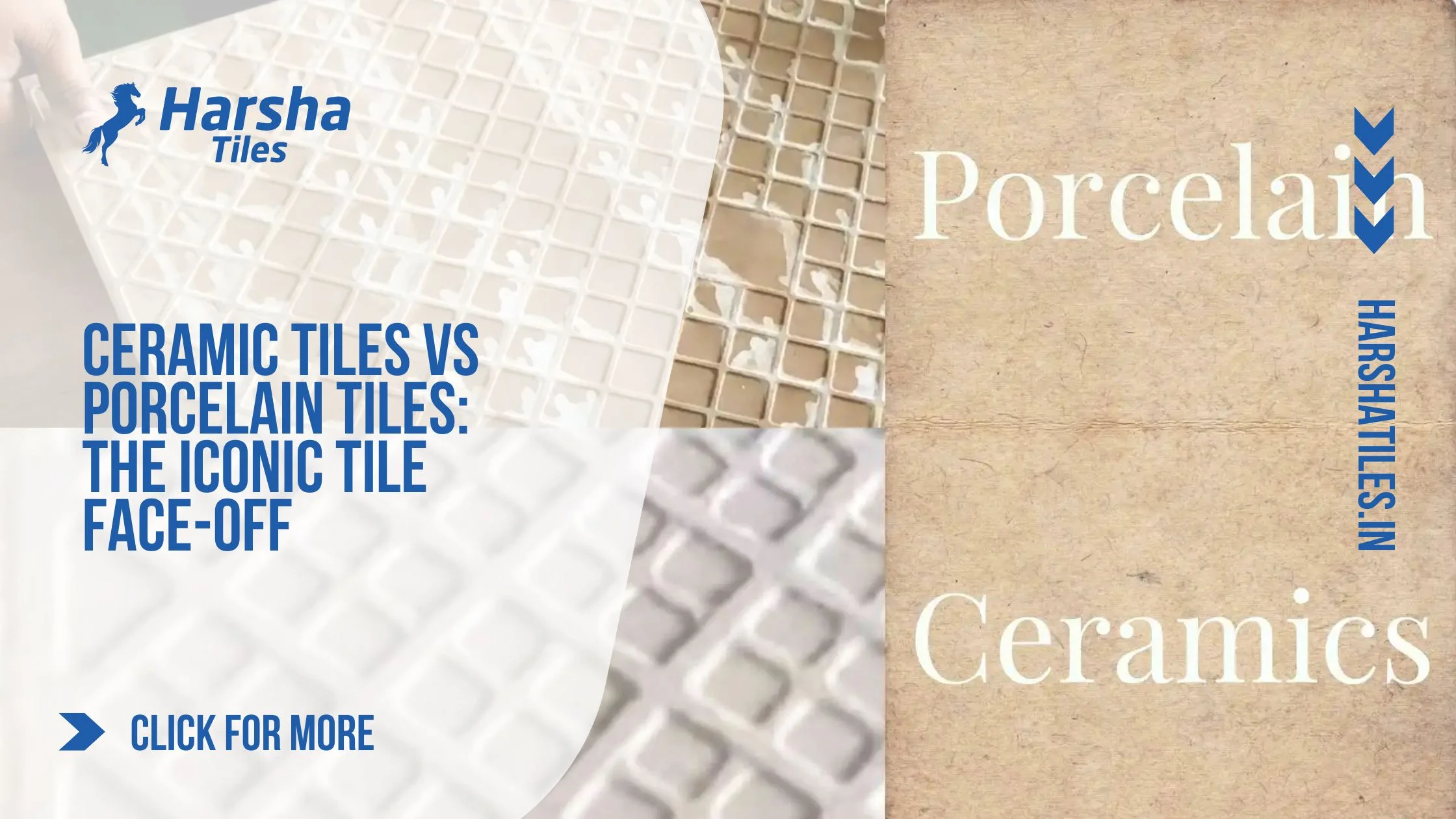Oct 03, 2025
Connect With Our Team
Ceramic Tiles vs Porcelain Tiles
- Home
- Utilities
- News & Blog
So you're thinking of renovating your kitchen or bathroom and want to upgrade the flooring. Two of the most popular options are ceramic tile and porcelain tile. They look similar, but they also have certain distinctive differences that you must know before choosing one of them. They both are long-lasting, aesthetically pleasing and low maintenance and the porcelain tile possesses certain advantages over the ceramic in some aspects, such as resistance to water and stain resistance.
Ceramic tile is, however, more cost-effective. Just like any decision regarding home renovation, you should weigh the pros and cons as per your needs and priorities. This guide will tell you everything you need to know about ceramic tile vs porcelain tile, so you can make a good decision in regard to your space and lifestyle. It is time to put on your sleeves and roll up your sleeves to become a part of the details. The right new flooring is just around the corner!
Durability and Strength: Ceramic Tile vs Porcelain Tile
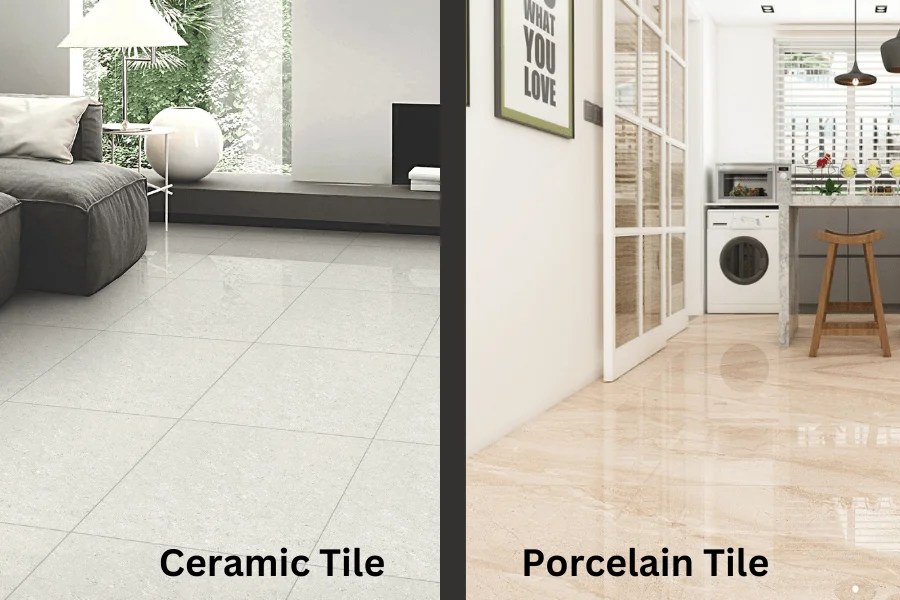
Porcelain tile is better compared with ceramic tile in matters relating to durability. Porcelain tile is composed of denser clay, and they are fired at a higher temperature and hence harder and less porous.
Porcelain tile is virtually waterproof, can not be stained and cannot be scratched. It can be used in wet places as bathrooms, kitchens, and entrance areas with high traffic. The ceramic tile may be more prone to staining and scratching, as it is softer and less resistant than the porous one. In low-trafficked, dry places such as bedrooms, ceramic tile flooring suffices and is generally less expensive.
Porcelain tile also has fewer points of cracking due to contact or temperature fluctuation. It absorbs minimal moisture, hence it will not crack in case there is a change in temperature or humidity. A ceramic tile is also more likely to chip/crack in such conditions because of being porous.
Porcelain tile is much stronger than any other tile. It is more solid in terms of its body, and it can also resist a huge load and pressure without breaking. High foot traffic, appliances, and furniture can be accommodated by porcelain tile than by ceramic one. Porcelain kitchen floor tiles and external porcelain tiles are indeed the only option when it comes to high-impact areas or commercial applications.
The decision to be made when comparing ceramic tile and porcelain tile is how durable or how much strength you require your floor or wall surface to have. In most cases of residential application, both of these materials can be used, but porcelain tile is your best bet for durability and low maintenance. The minor short-term influx of porcelain tile is also usually worth the money, with time to prevent expensive repairs and replacements in the future.
Although porcelain tile costs more to begin with, it can end up costing you less due to its durability. Porcelain is more solid, stony, and difficult than ceramic tile. It is less prone to scratches, stains, and water damage. When it comes to maintenance, porcelain tile may also last 50 years with little maintenance compared to ceramic tile, which may only last 10 to 25 years of moderate usage. In the long run porcelain tile might therefore be more economical.
Water Resistance and Stain Resistance: Ceramic Tile vs Porcelain Tile
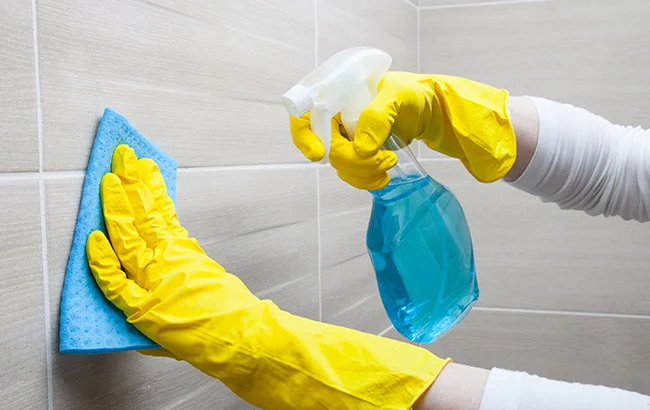
When it comes to water and stain resistance, porcelain tile has the edge over ceramic tile.
The porcelain tile is almost non-porous, which means that it will never absorb any moisture or liquids. Spills and splashes just bead and wipe away. Ceramic tile is a little porous and it may absorb stains as time elapses unless it is appropriately sealed. To keep your ceramic tile protected, you will need to apply a sealant once every few years.
Porcelain tile does not have to be worried about the high moisture environment, such as the entryways, kitchens, and bathrooms. In such areas, they may require avoidance or sealing of ceramic tile.
The porcelain tile is less prone to scratches, chips and wear compared to ceramic tile. Its compact treegard type of body does not hurt after receiving direct impacts and scrapes. The ceramic tile may chip or get scratched out so easily. A tiled and porcelain surface will not discolor under the sun or through contact with harsh chemicals. Years down the line, ceramic tile is likely to yellow or fade in the absence of proper sealing.
When choosing between the two, think about where the tile will be installed and how much moisture or traffic it will see. Your best bet would be the porcelain tile in high-moisture, high-demand areas since it is inherently durable and water resistant. In less high-profile applications, ceramic or porcelain tile would do the job just fine, but be ready to seal and take care of the ceramic tile correctly, to avoid its stains and deformities.
Finally, both ceramic and porcelain tile may be excellent choices. However, when it comes to water, stain, scratch, or fade proofing, there are certain benefits of porcelain tile.
Style and Design Options: Ceramic Tile vs Porcelain Tile
When it comes to style, ceramic and porcelain tile offer lots of options to match your decor. Both come in a variety of colors, textures, and patterns so you can achieve the look you want.
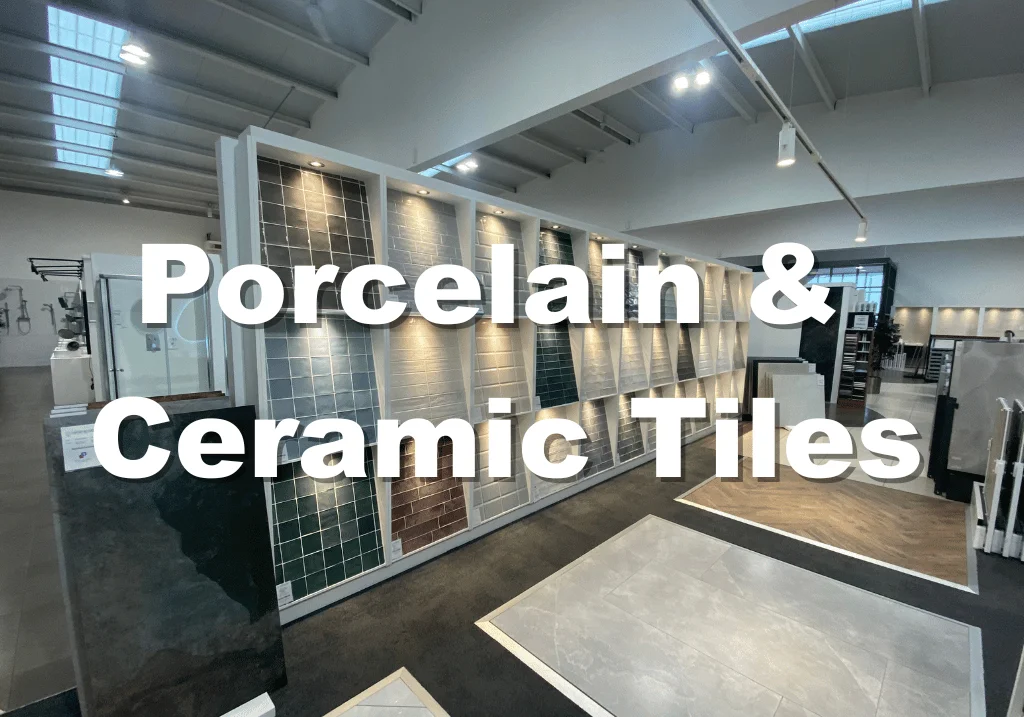
Colors
Ceramic tile comes in just about every color of the rainbow light oranges and reds to blues and greens. Porcelain tile is also available in a great color span of warm beiges and browns as well as cool grays. To achieve an organic stone look, select tiles with veins or a multi-toned combination. In case you prefer a smacking modern room, solid colors within the black, white or gray palettes would do. Options like white wall tiles and tile that looks like wood are increasingly popular in minimalistic and rustic interiors.
Textures
Ceramic and porcelain tiles come in various textures of smooth or rough, matte or glossy surfaces. A surface with some texture or embossed finish, such as slate or travertine, gives dimension and does not show flaws. In areas that receive a lot of traffic as well as moisture, such as bathrooms or kitchens, a non-slippery texture is preferable. Floors should be covered with matte finishes, and such finishes are not slippery when wet. Glossy tiles are also fine in areas that need a glossy wall, such as backsplashes and accent walls.
Patterns
Whether simple squares or complex mosaics, pattern tiles are a classy choice. Hexagons, triangles or diamonds are geometric tiles and provide a complex lattice pattern. The Moroccan style of tiles, or zellige tiles, with ragged, wave-shaped surfaces, adds a sense of being handcrafted. In seeking an uninterrupted appearance, big enough format underlays, with some as giant as 5 feet square, have minimal or no pattern.
Ultimately, setting up your place with ceramic or porcelain tile is virtually unlimited. A personal style can be attained with a few ideas and ingenuity. Whether it is the natural organic look you desire or contemporary smooth lines or the old-world classical look, ceramic and porcelain tile have got you covered either way.
Cost and Affordability: Ceramic Tile vs Porcelain Tile
The cost of the product is usually a key determinant when choosing either ceramic or porcelain tile. The price of the two kinds of tiles is normally quite high and this varies as well, but overall, the price of porcelain tile is higher when compared to ceramic tile. These are some of the factors that one should put into consideration when it comes to the price and affordability of these two popular tile alternatives.
Price-wise, the ceramic tile is usually the cheaper alternative, which makes it the perfect choice of homeowners who want to save on the initial cost of the product. The ceramic tiles are very accessible and cheaper than porcelain, which is denser and more durable, although a bit costly. The increased start-up cost of porcelain can, however, be offset by its increased longevity, poor maintenance and durability, thus resulting in savings over time in terms of repair or replacement. Your last decision must be your trade-off between budget, durability, and the individual requirements of your room.
Installation and Maintenance: Ceramic Tile vs Porcelain Tile
The price of installing both kinds of tile tends to be equal. Nevertheless, porcelain tile is less expensive to prevent wear and tear, which would require saving. Its stain-resistant and non-porous surface needs fewer sealing and cleaning. Ceramic tile requires periodic sealing to avoid stains and water damage, and it also may require more frequent cleaning and re-grouting. The extra maintenance of the ceramic tile increases the total cost of the life of that life.
Finally, you should consider both the advantages and disadvantages of the price that will suit your demands and wallet. Although using ceramic tile can be cheaper in the short term, porcelain tile will end up costing you less with its strength and the low cost of long-term care. Porcelain tile is likely to be a worthwhile investment in spaces where there is a high traffic of people, such as in bathrooms or areas that accumulate a lot of moisture, such as a kitchen. Ceramic tile would most probably have served the purpose very well and would be less financially stressful in less challenging places.
Tile Installation
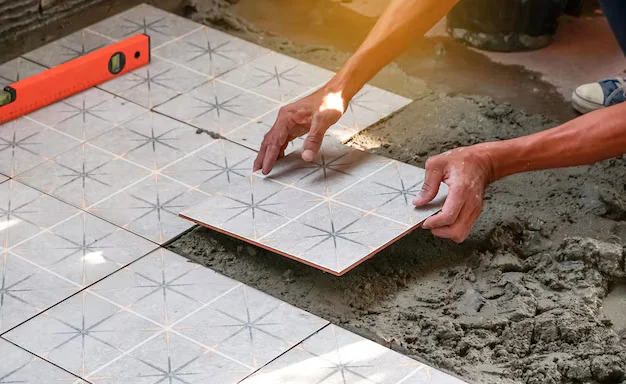
The same methods may be used in laying both tile, ceramic, or porcelain, but as it is porcelain is more dense and requires more work to cut and reduce. The porcelain tile can chip more, so it needs diamond-tipped cutting tools. Nevertheless, the porcelain tile is sturdier and is relatively hard to harm once it is put in place.
To the DIYers, a first project can be simpler with ceramic tile. In bigger or commercial applications or places that are going to get heavy use and abuse, such as a kitchen or an entryway, the extra work on installation is justified by the extra strength of the porcelain tile. Anyway, it is preferable to ask a skilled specialist to install tile properly so that it will not crack in the future.
Tile Maintenance
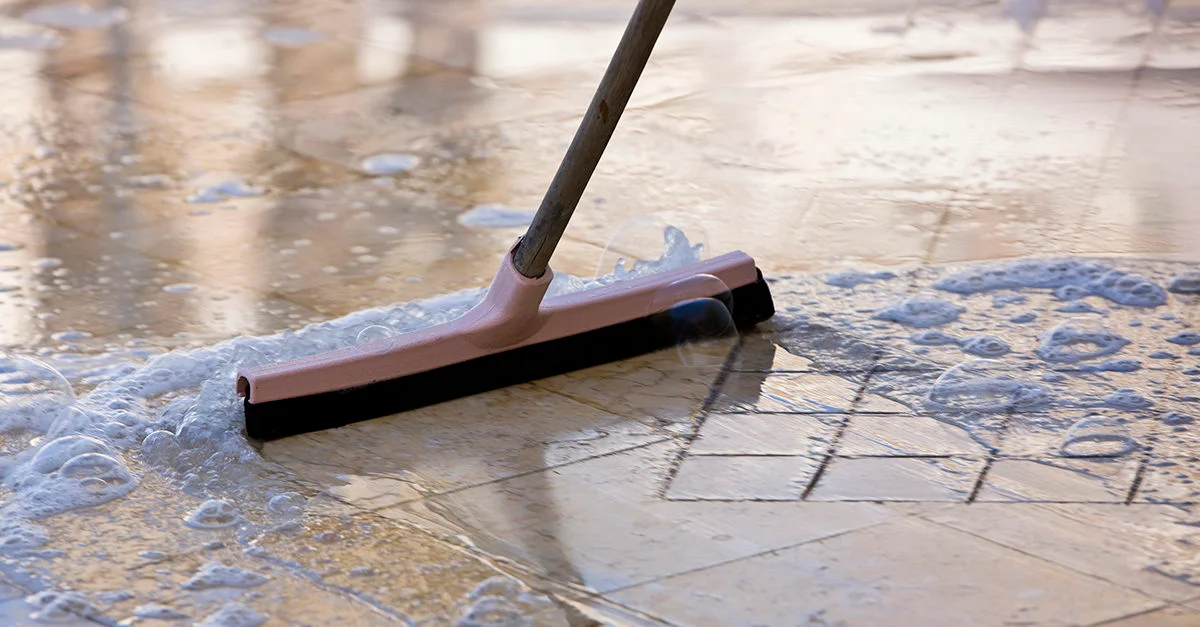
Ceramic tile needs to be sealed and cleaned on a frequent basis in order to avoid stains from affixing themselves. A coating of the sealant must be done every 6–12 months. Porcelain tile is almost non-porous and therefore, no sealing is usually required. To maintain both kinds of tile, regular cleaning with a damp mop or cleaner that does not harm tile and cleaning grouts on a periodical basis will help you keep your floors in the best shape.
Never use abrasive cleaners that will dull the surface glaze or scratch the tile. The durability of porcelain tile implies that it can be treated with cleaning techniques that are more intense, though abrasives are to be avoided. To remove persistent stains on a ceramic tile, use a paste of baking soda and water or a commercial tile stain cleaner.
Well-installed and regularly maintained top-quality ceramic and porcelain tile flooring can decades to last. Remembering the peculiarities of your concrete tile and its needs will allow you to achieve a long-lasting and beautiful outcome.
Ceramic Tile vs Porcelain Tile: A Quick Comparison
| Feature | Ceramic Tile | Porcelain Tile |
| Material Composition | Made from natural clay, less refined | Made from refined clay and feldspar |
| Density | Less dense, more porous | Very dense, low porosity |
| Durability | Moderate durability, suitable for low to medium traffic areas | High durability, ideal for high-traffic and commercial spaces |
| Water Resistance | Absorbs more water, needs sealing | Highly water-resistant, no sealing required |
| Stain & Scratch Resistance | Prone to stains and scratches if unsealed | Excellent resistance to stains, scratches, and chips |
| Installation | Easier to cut and install, DIY-friendly | Harder to cut, requires special tools |
| Cost | More affordable upfront | Slightly more expensive but long-lasting |
| Maintenance | Requires regular sealing and care | Low maintenance, easy to clean |
| Best For | Indoor, low-moisture, budget-friendly spaces like bedrooms and living rooms | High-moisture, high-traffic areas like bathrooms, kitchens, and outdoors |
Regional Tile Recommendations: Choosing the Right Tile for Southern Homes
Considering the preference of ceramic tiles versus porcelain tiles in southern states such as Tamil Nadu, Kerala, Karnataka, and Andhra Pradesh, climate, lifestyle, and architectural style should be considered as one of the fundamental factors.
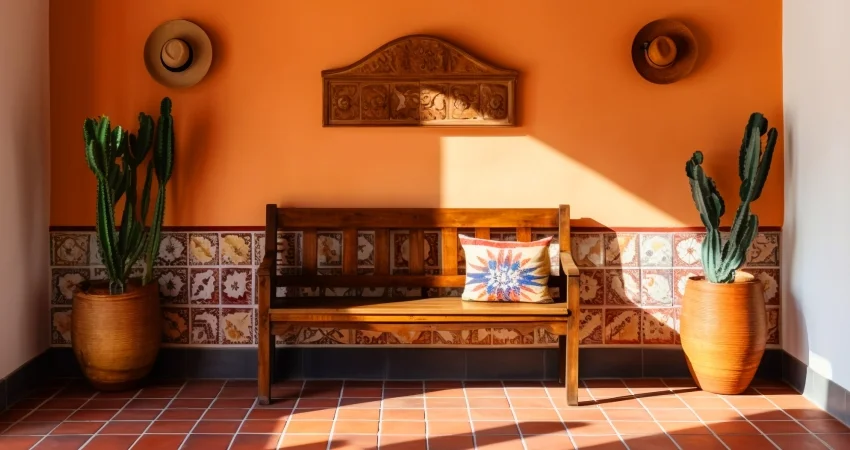
Karaikudi
The Karaikudi Athangudi centre in the state of Tamil Nadu is a good source of ceramic tiles in regard to traditional homes and heritage buildings. These handcrafted tiles are colorful, glossy, and they are able to cool, which is just what is needed in this dry arid area of the world. Nevertheless, they should also be well sealed and hence are best to be used in interior areas such as the living rooms, verandahs, and courtyards.
Kerala
It is really advisable to use porcelain tiles in bathrooms, kitchens, and even premises exposed to rain in Kerala, where there is a high level of humidity and rainfall tends to be rather common. Ceramic tiles are also effective as long as they are sealed well to be used in the indoor dry areas, such as bedrooms.
Karnataka (Bangalore, Mysore)
Bangalore is a city with a moderate climate and therefore, ceramic as well as porcelain tiles, are appropriate to use depending on the space. Porcelain can be used on balconies, bathrooms, and high-traffic areas, whereas ceramic tiles can be utilized indoors on a low-end scale flooring, either in the bedroom or the living room.
Andhra Pradesh & Telangana (Hyderabad, Vijayawada)
This area has very warm summers and moderate winters, so the tiles are good for use in the outside area and high-traffic areas such as kitchens and corridors because they are made of porcelain. To provide decorative value in the formal places, the ceramic tiles or the local tiles, such as Athangudi tiles, may have that special effect, provided care is taken in using them on interior spaces.
Harsha Tiles: Your Trusted Destination for Quality Tiles
Harsha Tiles is one of the highly trusted brands of tiles and has the widest variety of tiles available with high quality, which fits into all spaces and tastes. It does not matter whether you want to have marble-style ceramic walls, porcelain tiling of exceptional quality, or designer lines; Harsha Tiles has something to offer since it guarantees exquisite quality, innovative patterns, and long-term functionality. Its uncompromising desire to deliver quality goods at an affordable price and the satisfaction of the customer has earned Harsha Tiles the reputation as the place to go when it comes to finding high-quality flooring and wall products, including wood look tile, to use in any residential or commercial building, year in and year out.
Conclusion
So there you have it, the key differences between ceramic and porcelain tile to consider for your next home project. Both are long-lasting and require a minimum amount of maintenance to change the appearance of your room. The ceramic tile can be a little cheaper, yet the porcelain tile is more durable and tougher. Finally, you have to consider what works best on your particular requirements, and decide on what matters to you most: price, looks, or durability. Regardless of your choice, both types of tiles will assist you in bringing out a stylish and quality finish. It is up to you to choose! Produce it without having to worry about not having the facts. Your house of your dreams is waiting to be touched by your perfect touch.
Latest Blogs
Got questions? Fill out the form and get in touch with us!
Harsha Tiles
21,22 Cowley Brown Road ,
R.S. Puram,Coimbatore – 641002.
2025 Harsha Tiles | Design And Managed By : LLS - INDIA
Whatsapp Chatx
Hi! Click one of our representatives below to chat on WhatsApp or send us email to info@harshatiles.in
 |
Mr Saleem +91 82702 80707 |
 |
Mr Martin +91 78688 86655 |

We will love to hear from you!

